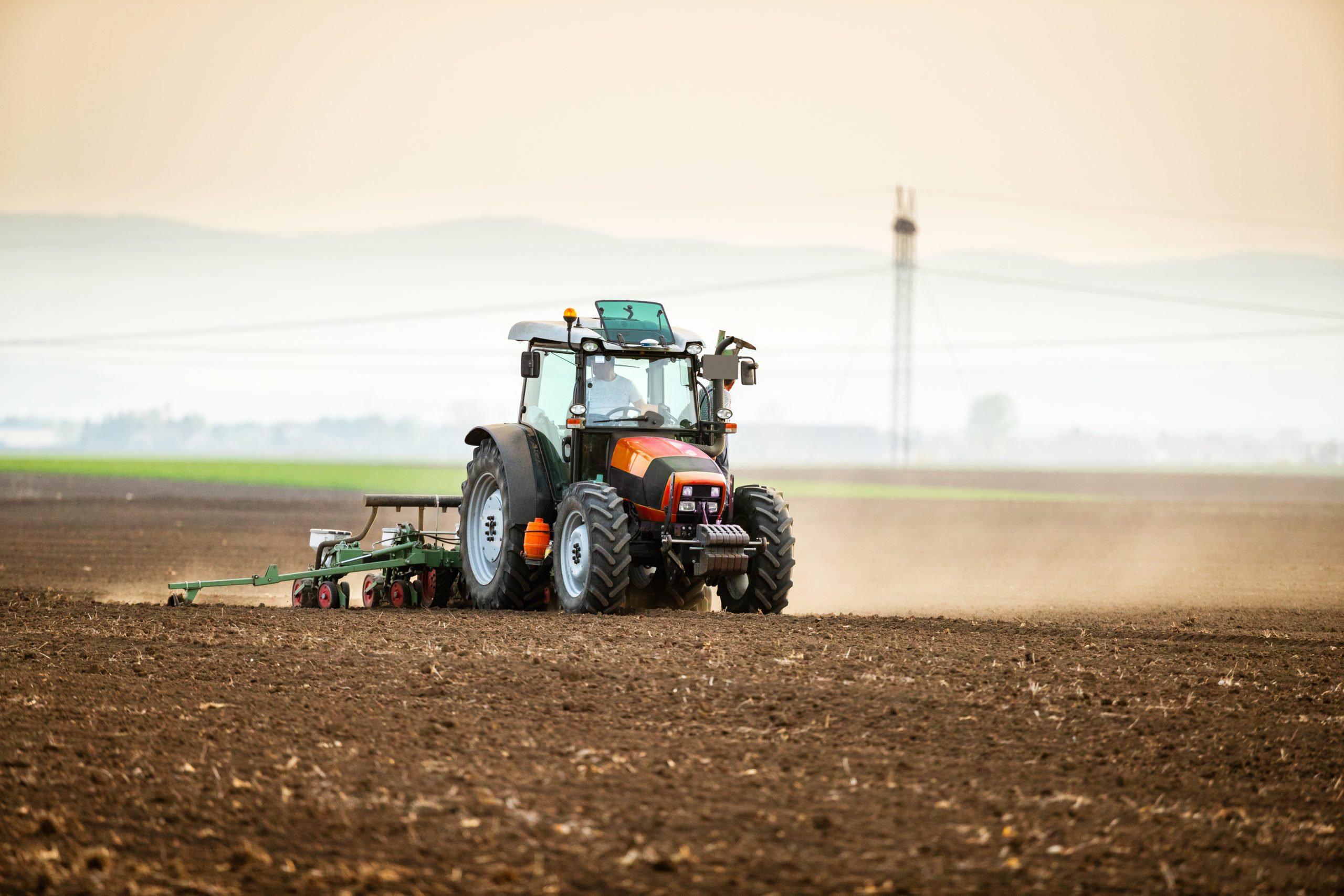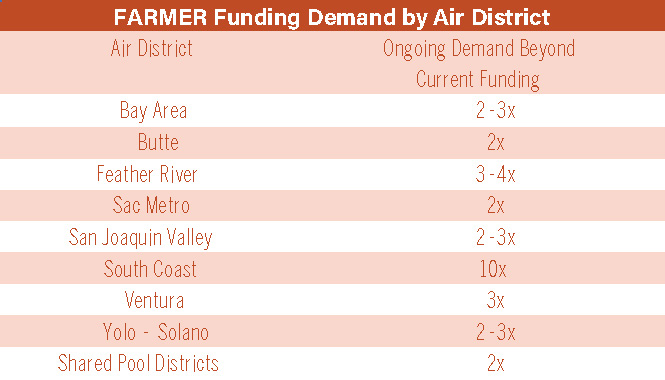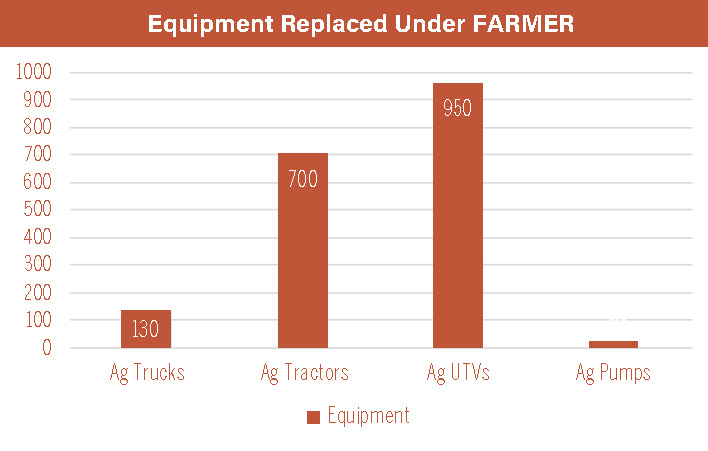 In 2018, the state began spending greenhouse gas reduction fund (GGRF) money from the Cap and Trade Program on the “Funding Agricultural Replacement Measures for Emission Reductions (FARMER) Program. The FARMER Program was designed to mirror the state’s existing Carl Moyer Program, but expand upon it greatly with considerably more funding. The first three years were provided more than $332 million statewide! Unfortunately, it has been diminishing each year. The first year included $135 million in incentive funds, while FY 2019/2020 only has $65 million.
In 2018, the state began spending greenhouse gas reduction fund (GGRF) money from the Cap and Trade Program on the “Funding Agricultural Replacement Measures for Emission Reductions (FARMER) Program. The FARMER Program was designed to mirror the state’s existing Carl Moyer Program, but expand upon it greatly with considerably more funding. The first three years were provided more than $332 million statewide! Unfortunately, it has been diminishing each year. The first year included $135 million in incentive funds, while FY 2019/2020 only has $65 million.
This is especially worrisome for the San Joaquin Valley, where their State Implementation Plan (SIP) relies upon 12,000 tractors being replaced by 2023 based upon a full allocation of the FARMER funding. Achievement of that goal is now in serious jeopardy as the state has lowered the FARMER funding. This funding has primarily been used to fund the replacement of tractors, but has also been used to replace agricultural utility terrain vehicles (UTVs) and agricultural trucks. The program will pay a farmer up to 60 percent of the cost of a new Tier 4 tractor or harvester, 65 percent of a new truck, and 5 percent of an electric UTV. As of June 30th of this year, the funding had replaced 130 trucks, 700 tractors and harvesters, 20 ag pumps, and 950 ag UTVs statewide. This is an incredible statistic! And these replacements have in turn generated very significant emission reductions in a very short time period. According to the California Air Resources Board (CARB), the equipment replacements to date have generated emissions reductions of 42,000 metric tons of CO2e, 230 tons of fine particulate matter (PM2.5) and 3,700 tons of Nitrogen Oxide (NOx) as of June 30th of 2019.
If you look at more recent data, just for the San Joaquin Valley, it is even more impressive! As of November 12th of this year, the San Joaquin Valley Air Pollution Control District (SJVAPCD) had 12 ag pumps, 1,549 UTVs, 784 tractors/harvesters, and 152 trucks just through the FARMER program. And the amazing fact is that farmers throughout the state are ready to replace even more equipment. According to the California Air Resources Board, the ongoing demand for this money is more than twice the money that has been allocated. Here is a breakdown of demand by air district throughout the state:
With all of these benefits and this much demand, why are the funds diminishing? That’s the question everyone is asking. With such success in cleaning up the state’s air in a very short period of time it seems like the funding would be on the increase. And that is what we are hearing from agencies like the California Air Resources Board and California Environmental Protection Agency (CalEPA). But the Administration hasn’t seemed to be on the same page. Even environmental advocates are supporting the cleanup effort as 65 percent of the funding has been spent in areas of disadvantaged and low-income communities. A major effort is brewing to go to Sacramento and demand more money be allocated towards FARMER funding. The Legislative Analyst’s Office just announced that California will have a $7 billion surplus for fiscal year 2020-2021 and much of that would be available for “one time expenditures”. The demand is there and so is the money. We have a real opportunity to meet a state mandate in a way that makes sense, on where all sides agree on doing it. Let’s not waste the chance!

Roger Isom
Roger is President/CEO of the California Cotton Ginners and Growers Association and Western Tree Nut Association. He brings over 30 years of regulatory and legislative advocacy experience, specializing in environmental and safety matters. Roger’s responsibilities include the management of both Associations’ staff and day-to-day operations. Roger is also the President of the Ag Energy Consumers Association (AECA), board member and Past President of the Ag One Foundation at California State University Fresno, and manages the Navel Orangeworm Action Committee (NOWAC).


















